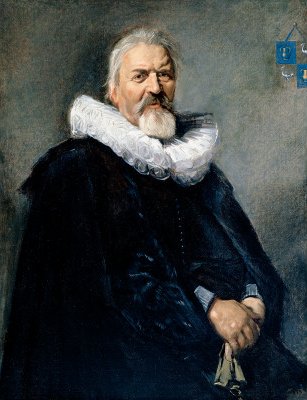His career peaked during the 1630's and 1640's as a portrait painter. In the 1630's he abandoned early bright colors for a monochrome effect and his portraits became more unified and simple, with poses more frontal. By the 1640's he painted portraits with a more aristocratic air but with less ostentatious poses. Most of his backgrounds were now dark and the clothing black. It is believed that he painted from the model, very quickly and with a limited palette. The immediacy and brilliance of his portraits brought sitters to life - they were said to "breathe". His innovative loose brushstrokes to depict light on form were seen by art critics of the 18th and early 19th centuries to be lazy and unfinished and his work was almost forgotten for two centuries. With the rise of "Realism" and "Impressionism" he has been hailed as a painter before his time. His personal life was pretty much of a disaster. Nothing about him was attractive except that he was a great painter and a jolly soul. He was a drunkard and a wife beater. His first wife died in 1617 and he married again five months later to Lysbeth Reyniers who bore him ten (10) children - the first born five (5) days before their marriage. One son ended in the insane asylum and a daughter was sent to the workhouse. Hals himself was destitute by 1652 and died a pauper in 1666. His last great masterpiece was painted at this time (1664) entitled The Women Regents of the Old Men's Home in Haarlem. While some in the past have decried his lack of range, ie. no religious pictures, landscapes or nudes, he is considered today as the most brilliant executant of portraits the world has seen. Subject: Painting: While the portrait is painted with a limited number of colors, Hals produced an almost infinite number of nuances within the seemingly restricted range. It had been said that Hals' palette contained a hundred different blacks. The face has the broad, rapid brushwork which invests Olycan with a lifelike spontaneity, creating the illusion that the expression playing across his features has been captured in an instant. It seems that Olycan is speaking to us. The sense of exchange with the viewer, that lies at the heart of baroque portraiture, is certainly evident in this portrait. The purchase of the portrait was a coup for Ringling in that Lord Duveen, the internationally known art dealer and collector, tried unsuccessfully to buy it from him for several times the amount he had paid for it. Historical Context:
|
